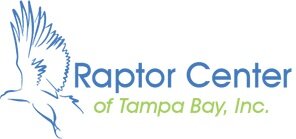
About Raptors
Raptors & The Law
To report a sick or injured bird, please call our hotline at 813-205-1851
Florida requires permits for wildlife possession, exhibition and sale.
Florida has nearly 1,300 native species of fish and wildlife. It also is home to nearly 300 species of nonnative fish and wildlife. FWC enforces the statutes and regulation governing Florida's wildlife industry.
FWC officers routinely conduct inspections of ours and other facilities to ensure humane treatment and sanitary conditions are in place for the animals, and cage and security requirements are adhered to for public safety. The FWC's regulations, relative to cage sizes, safety and humane treatment, are among the most stringent in the nation.
Visit https://myfwc.com for more information about Captive Wildlife Rules and regulations.
THE LIST OF MIGRATORY BIRD SPECIES PROTECTED BY THE MBTA
The Migratory Bird Treaty Act prohibits the take (including killing, capturing, selling, trading, and transport) of protected migratory bird species without prior authorization by the Department of Interior U.S. Fish and Wildlife Service.
The list of migratory bird species protected by the law is primarily based on bird families and species included in the four international treaties. In the Code of Federal Regulations one can locate this list under Title 50 Part 10.13 (10.13 list). The 10.13 list was updated in 2020, incorporating the most current scientific information on taxonomy and natural distribution.
A migratory bird species is included on the list if it meets one or more of the following criteria:
It occurs in the United States or U.S. territories as the result of natural biological or ecological processes and is currently, or was previously listed as, a species or part of a family protected by one of the four international treaties or their amendments.
Revised taxonomy results in it being newly split from a species that was previously on the list, and the new species occurs in the United States or U.S. territories as the result of natural biological or ecological processes.
New evidence exists for its natural occurrence in the United States or U.S. territories resulting from natural distributional changes and the species occurs in a protected family.
THE LIST OF BIRD SPECIES TO WHICH THE MIGRATORY BIRD TREATY ACT DOES NOT APPLY
The Migratory Bird Treaty Reform (MBTRA) Act of 2004 amended the MBTA by stating the MBTA applies only to migratory bird species that are native to the United States or U.S. territories, and that a native migratory bird species is one that is present as a result of natural biological or ecological processes. The MBTRA requires the Service to publish a list of all nonnative, human-introduced bird species to which the MBTA does not apply, and an updated list was published in 2020.
The 2020 update identifies species belonging to biological families referred to in treaties the MBTA implements but are not protected because their presence in the United States or U.S. territories is solely the result of intentional or unintentional human-assisted introductions. It reflects the most current scientific information on taxonomy and natural. This information is found on the USFWS website and was updated in 2020.


